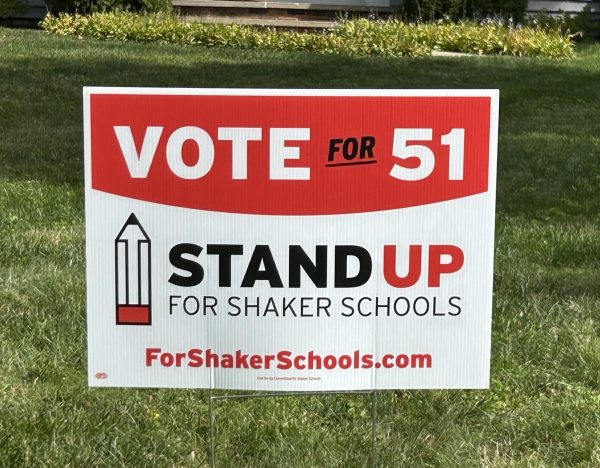Harvard Admissions Trial Exposes Contradictions
Harvard Medical School, the oldest medical school in the country, on the Harvard University campus in Cambridge, Mass. Harvard’s undergraduate admissions practices are the subject of a lawsuit alleging discrimination against Asian applicants.
In the heat of college application season, the Harvard admissions trial has sparked intense conversation on the admissions process. In a lawsuit led by the president of Students for Fair Admissions, Edward Blum, Harvard has been accused of discriminating against Asian applicants. The three-week trial began Oct. 15 in Boston. The judge has said she may not rule until February.
Blum has a history of litigation against affirmative action in higher education, having also recruited Abigail Fisher, the plaintiff in Fisher v. University of Texas. When the Supreme Court ruled in favor of UT Austin’s affirmative action policies, Blum moved on to Harvard’s “Asian problem.” He aims to end racial classifications in admissions.
The homepage of the SFA website asks, “Were You Denied Admission to College? It may be because you’re the wrong race.” Despite implying that race can be the deciding factor of admission, racial quotas at colleges are illegal. Of course, the question is whether Harvard considers race too heavily, possibly resulting in the rejection of a student in favor of another with a different color skin.
Studies suggest Asian-American applicants need to have higher test scores than other applicants to gain admission to top colleges. Harvard has even confessed that Asian applicants are admitted “at a significantly lower rate than white applicants” despite their “slightly stronger” SAT scores and grades. Still, it’s interesting that disillusioned whites and Asian-Americans lead this crusade against affirmative action, while white and Asian-American students are overrepresented at every Ivy League school. These institutions are also still majority white schools.
If SFA’s goal is to abolish racial classifications in order to prevent alleged bias, then it follows that colleges shouldn’t ask for personal essays, resumes or other material that admissions officers can review subjectively. If we really want to make college admissions “fair,” there are other areas that should draw scrutiny, too. In fact, “legacy” applicants and athletes have an advantage over applicants who don’t have history with Harvard, with an admission rate of 34 percent, compared to 6 percent for non-legacy applicants.
Why is it that star athletes or children of Harvard alumni — two predominantly white demographics — have such an upper hand that’s not based on academic merit? Blum’s silence on this fact raises deep questions about his motives.
Furthermore, Blum conveniently employs the model minority myth, lumping all Asian-Americans together as homogeneously successful, when Asians are the most economically divided group in America. The model minority myth questions why African-Americans can’t overcome systemic racism through hard work by comparing them to Asians who appear to have succeeded, despite Japanese-American internment and the Chinese Exclusion Act of 1882.
Not only does this concept downplay how 200 years of slavery affects current African-American struggles; it also harms Asians who don’t fit into that narrative. Less-represented South and Southeast Asians, whose countries are underdeveloped and don’t provide the economic resources for good education, benefit from affirmative action. Nevertheless, Blum appeals to Asian-Americans dismayed at the idea of losing a spot in an Ivy League school to someone who didn’t score higher on standardized tests or achieve the same stellar grades.
The purpose of implementing race-conscious admissions programs was to acknowledge that systemic inequalities disproportionately impact African-Americans and Latinos. Even with affirmative action, blacks and Hispanics are still underrepresented at top colleges, with black students comprising 15 percent of college-age Americans but only 6 percent of freshmen at those schools, according to a New York Times analysis. Hispanics experience the same kind of gap due to population growth. Adopting race-blind policies doesn’t stop discrimination; it overlooks the effects of historical prejudice. Alternatively, schools could implement socioeconomic-based affirmative action instead, which could more accurately identify underrepresented students without considering the color of their skin.
In the end, if Harvard indeed abuses race as more than just an admissions “plus” factor, there’s no doubt that it’s a problem. However, Harvard’s skewed admissions system should not be an instrument to advance Blum’s agenda for dismantling all affirmative action policies. We have to acknowledge how racial identity plays into a student’s socialization. In Harvard senior Sally Chen’s words, “How can you talk about someone’s potential or their achievements without giving a full context that talks about their identity and the struggles they have faced?”
In the same way that the model minority myth is used by people who believe minorities can overcome systematic racism through simple hard work and family values, proposing to eliminate race-conscious policies in higher education ignores the fact that systematic oppression exists in the first place.
Guest ‘Rites and Letters to the Editor can be sent to shakeriteserver@gmail.com and the current editor-in-chief, who can be reached at astridkbraun@gmail.com. The Shakerite reserves the right to reject any Guest ‘Rites or Letters to the Editor.








